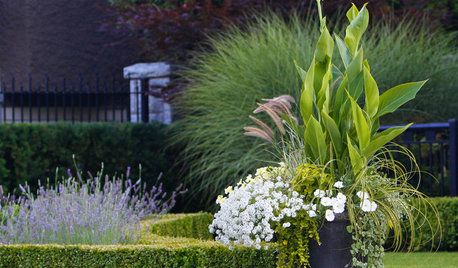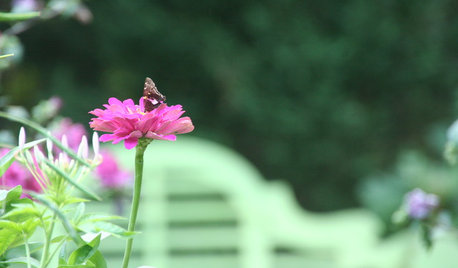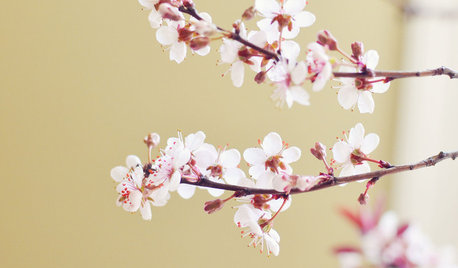Dahlia Propagation
Hi All:
Here's an article on dahlia propagation I wrote for my county's March/April 2007 Horticultural Newsletter. Hope you find it informative. Please give me any feedback you
might have.
Dahlia Boy.
DAHLIA PROPAGATION
Mid-March normally finds me in my attic inspecting the hundreds of dahlia tubers that have been resting since the end of November, when they were lifted from the ground, divided, and placed in their respective storage bags of vermiculite. In just a few weeks,
I will be waking them up and preparing them to once again grace my home garden and the Master Gardeners demonstration garden at the HartÂs Brook Preserve with their spectacular displays of color.
There are three different ways dahlias can be propagated:
1. planting tubers directly into the ground;
2. taking cuttings from tubers; and
3. sowing dahlia seeds
The first two methods will yield a plant that is identical to that of the parent. The third method will produce plants with characteristics of both the mother plant and whatever plants the pollinating bees and insects visited. As a general rule, IÂve found that, here in Westchester County, the Memorial Day weekend is a safe time to start planting tubers, cuttings, and seedlings outdoors, as the threat of frost has passed.
PLANTING TUBERS
Planting tubers is the most common form of propagation. The tuber, with a visible eye, is planted four inches below the surface of the soil, during the Memorial Day weekend. Watering is not required until the shoot breaks through the surface of the soil, usually ten days after planting. I used this method exclusively for several years when I first began growing dahlias, but have modified it somewhat. I now give my tubers a head start indoors by placing them, eyes up, in a shallow tray of moist potting mix. This is known as "benching up," and is done around mid-April. The tray is then set under grow lights, near a sunny windowsill, or in a greenhouse, if youÂre fortunate enough to have access to one, for several weeks, allowing the tubers to sprout. At the end of May, dig a four-inch deep hole in the soil and transplant the tubers with their six-inch shoots in the garden. Not only will you have flowers earlier (by mid-July instead of mid-August), but youÂll know that your tubers are viable before putting them in the ground.
CUTTINGS
Taking cuttings from tubers is an economical way to increase stock of a particular variety. This method starts by placing the tubers, eyes up, in a shallow tray of potting mix around the first of April. Once the growth is approximately three inches in height and has two sets of leaves, cut the stem one-eighth of an inch from the tuber using a razor blade. Then, dip the cutting in a rooting hormone and place it in a small pot. Water and cover with a small plastic sandwich bag in order to maintain a humid environment. Place the pots under grow lights or on a sunny windowsill. The cuttings should root within ten to fifteen days. IÂve found that an average-size tuber will yield between four and six cuttings. After growing indoors for several more weeks, cuttings, like tubers, can be safely planted outside around Memorial Day weekend. It is important to remember that cuttings will need to be hardened off prior to planting outside.
GROWING DAHLIAS FROM SEEDS
Growing dahlias from seeds can be fun because you never know what your flowers will look like. The reason for this is that dahlia plants grown from seeds will not come true to type, due to the fact that the dahlia is a natural hybrid and relies on bees and other insects to cross-pollinate it. In the Fall, gather a few ripe seedheads and let them dry. Carefully pull away the petals and collect the seeds. In the Spring, usually around April 1st, sow the seeds in trays of moist potting mix and place them under grow lights or near a sunny windowsill. Transfer the seedling to individual pots once they reach between two and three inches in height. Seedlings, like tubers and cuttings, can safely be planted outside around the Memorial Day weekend. Note that, while seeds may bring surprises, more often than not they produce imperfectly-formed flowers. Named varieties of tubers, on the other hand, have been developed over many years to yield consistent, beautiful blooms.
Should anyone have further questions or want to discuss dahlia culture, stop by the HartÂs Brook Preserve from April through November.
Happy Gardening,
Dahlia Boy
Master Gardener 2006









jroot
gladdahlia
Related Professionals
Belmont Landscape Architects & Landscape Designers · Forest Park Landscape Architects & Landscape Designers · Vernon Hills Landscape Architects & Landscape Designers · Mount Wilson Landscape Architects & Landscape Designers · Estelle Landscape Contractors · New Brighton Landscape Contractors · Palos Verdes Estates Landscape Contractors · Forest Hill Landscape Contractors · Brooklyn Fence Contractors · Brooklyn Park Fence Contractors · Hoffman Estates Fence Contractors · Mays Chapel Fence Contractors · Nampa Fence Contractors · South San Francisco Fence Contractors · Wilson Fence ContractorsdahliaboyOriginal Author
yearroundgardener
plantlady2
huey_ga